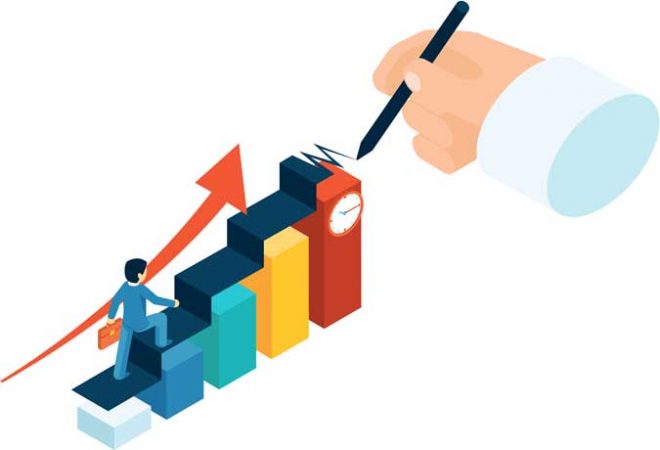By Kyle Aristophere T. Atienza
MARITES A. SOTELO, 53, owns a small food store near a public school in Alicia, Isabela — scene of some of the worst Cagayan Valley floods after Typhoon Ulysses (international name: Vamco) in November.
That means that on top of the pandemic, which deprived her of her clientele after the schools closed, Ms. Sotelo has had to deal with the economic damage done to her town by the typhoon, which caused the Cagayan River to overflow its banks — to the extent that she wishes for more government aid for small businesses.
Her plight, multiplied millions of times across the country, has helped create unprecedented demand for stimulus funds, with Congress enacting economic revival packages in the hundreds of billions of pesos. Meanwhile, economic managers have tried to persuade legislators to accept smaller amounts, citing limits to the resources available to the government.
The recovery is hanging in the balance, with the Philippines’ fiscal response deemed by analysts to be among the smallest in the region, shedding light on the central conflict currently simmering within government — legislators eager to spend, and economic managers trying to impose restraint.
The rush to stimulate the economy kicked off shortly after the initial declaration of a state of calamity on March 16 via Proclamation No. 929, which recognized the outbreak as a public health emergency. Such declarations under Philippine law are designed to expedite the release of government funds to support urgent spending priorities.
Congress responded by passing the P275 billion Republic Act (RA) No. 11469 or the Bayanihan to Heal as One Act (Bayanihan I), which granted Mr. Duterte special powers to realign funds from within the P4.1-trillion national budget for 2020. The law provided for, among others, cash handouts of between P5,000 and P8,000 a month over two months for 18 million low-income families.
The law, which was signed by Mr. Duterte on March 25, was initially only valid for three months, though efforts to extend this period were ongoing at deadline time.
BAYANIHAN II: ‘LESS OF S STIMULUS’
By June, as the lockdown dragged on, the calls emerged for more stimulus, particularly after the Philippine Statistics Authority (PSA) reported record unemployment of 17.7% in April, equivalent to 7.3 million jobless.
The result was RA No. 11494 or the Bayanihan to Recover as One Act (Bayanihan II), which authorized P165.5 billion in additional funding for coronavirus-related spending and economic stimulus measures. The actual funding level was P140 billion, with the balance of P25.5-billion contingent on further fund-raising or savings — among the first clues that the government was straining to raise money. The law was originally designed to lapse before the end of the year, but as of mid-December, efforts were underway in Congress to extend its validity, as well as the period when 2020 Budget funds can be used.
IBON Foundation Executive Director Sonny A. Africa described Bayanihan II as “less of a stimulus” because it was largely funded by budget re-alignments and not new spending, as was Bayanihan I.
“The Philippine response is even weaker than those countries that are less ‘financially strong’ or creditworthy which indicates that we really have more fiscal space than the economic managers admit,” Mr. Africa told BusinessWorld.
Two months before Bayanihan II was passed by the House in August, the chamber had approved at plenary level a P1.3-trillion stimulus package, the proposed Accelerated Recovery and Investments Stimulus for the Economy (ARISE) bill. It was written by House Stimulus Committee Chair Stella Luz A. Quimbo, and was intended mainly to aid small firms severely impacted by the pandemic.
The Department of Finance, however, put its foot down, calling the package “fiscally unsustainable.” Finance Secretary Carlos G. Dominguez III, citing the need to keep resources in reserve for a long pandemic, balked at a bill that was equivalent to about a quarter of the annual budget. The Senate has thus far yet to pass its version of the ARISE bill.
“An effective stimulus program involves spending more. More borrowing will not be a problem if the economic managers let go of their narrow obsession with credit ratings and instead give more attention to what the economy and the people need,” Mr. Africa said.
He described the size of the Bayanihan packages as only a fraction of the P3 trillion in projected borrowing for 2020.
REVIVING THE ECONOMY
Ms. Quimbo, a former University of the Philippines economist who is currently pushing a Bayanihan III bill, said the packages enacted so far are “not sufficient for the genuine economic recovery of the country.”
Ms. Quimbo said an additional economic stimulus package is needed to ensure that recovery targets are met, and estimated the amount needed at P1.56 trillion. In mid-November she filed HB No. 8031 or the proposed Bayanihan to Arise as One Act (Bayanihan III).
“Given the numbers, I hope our economic managers would… agree to support Bayanihan III,” Ms. Quimbo told BusinessWorld.
The Bayanihan III bill provides for an additional P400-billion stimulus package, boosted by the need to rehabilitate areas that sustained damage from typhoons Rolly (international name: Goni) and Ulysses.
Apart from the DoF’s default position of spending restraint, the pro-stimulus camp also has to contend with the administration’s desire to leave an infrastructure legacy when it steps down. The government has gone on record as saying that it is depending on infrastructure spending to lift the economy.
Mr. Africa said a P1.5-trillion stimulus program, which includes P752 billion in emergency assistance for low-income families and P680 billion for small businesses and the agriculture sector, will be needed to bounce back from the pandemic.
It’s a standoff whose resolution may ultimately decide how soon the recovery will come.

